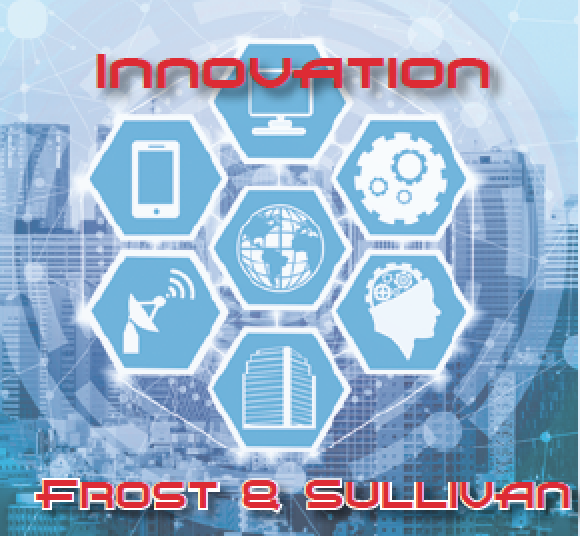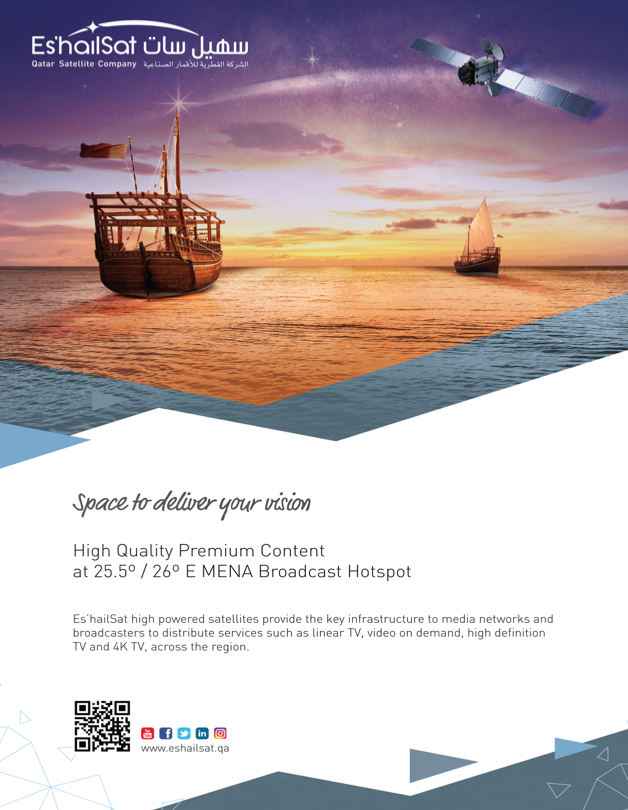Innovative ideas produce innovative results that further the causes of the industries and target market segments within the satellite and space environs. Frost & Sullivan helps their clients leverage technology convergence to create better solutions for their customers, with services such as technology vision road-maps, technology convergence workshops and technology commercialization strategies.

The company also assists their clients to evaluate and monetize their IP through a structured approach that integrates the firm’s deep understanding of applications across multiple points in the value chain.
Mr. Michael Blades, the company’s Research Director and Space Program Manager, was asked by SatMagazine why innovation is so important to the industry and, in particular, to his company?
Michael answered, “The industry is constantly changing by default and right now it is observing waves of disruptions by design cutting across business models, technologies and markets. The variability in the industry is becoming hard to predict. While businesses are evolving and changing the ways to meet new customer needs, the consequence is a avalanche of trends impacting the dynamics of the industry.
“The customer needs are changing and the requirements are getting increasingly specific and to meet this, the industry needs to standardize such that it meets the specific needs with customized value. This means innovation, in today’s time is a unstoppable engine. Innovative standardization internally is required to deliver customized value outside so the businesses interact with diverse customer groups through diverse business models and technologies.
“Frost & Sullivan, being a consulting firm specializing in innovative research methodologies, keeps a close eye on the industry participants and continuously interacts with the industry participants to understand their travel and their target destinations. While technological advancement has been a part of Frost & Sullivan’s overall innovation philosophy, our core strength is our research teams who conduct the market and technology investigations for our clients.
“Operationally we are work on collaborative efforts implementing the One Team philosophy where client value we deliver is a combination of contributions from our experts across the globe. We use the new age technologies to enable this objective of ours. Summing up, innovation for Frost & Sullivan is bringing the core strengths much closer on multiple collaborative platforms aided with modern technology so we continue to support our clients achieve their objectives, challenging ourselves and improving along the way.
When discussing the innovative projects Frost & Sullivan has underway, Mr. Blades added, “Frost & Sullivan is embracing its own version of digital transformation and is aspiring to deliver new digital versions of its value added research services to its clients.”
Turning to Mr. Vivek Suresh Prasad, Industry Principal—Space (he is also an ex-ISRO scientist), and Mr. Arun Kumar Sampathkumar, the Industry Manger—Space, both headquartered in India for the company, they were asked what Frost & Sullivan sees as the innovative technologies that will drive the space and satellite industry over the next year or so?
Their answers highlighted mega-constellations as a key disruptive trend that Frost & Sullivan is closely observing, as well as the technologies related to this are, which are crucial for the space industry, realizing what might be a new market segment that did not previously exist. The key technologies must involve smart manufacturing methods that will enable the satellite manufacturing community to establish serial production capabilities to meet the demand from mega-constellation operators.
The subject-matter experts then added that manufacturing the satellites is just the beginning of an involved process. They need to be placed in specific orbits at a specific time period, which means there needs to be dedicated launch services for these mega-constellations. The mega-constellations targeting the LEO segment are largely employing small satellites that currently are able to access space only as secondary payloads in the majority of cases — dedicated services are yet to be realized.

They said that Frost & Sullivan’s research covers more than 30 of these developers who are working toward scheduled operations. Technologies covering range-independent launch systems to air-launched rocket systems are key in this segment right now. Simultaneously, governments are looking to enable spaceport based launch services for small satellites. The UK Space industry is much closer to realizing this business model which, when operational, will enable many new players and incumbents to deliver the other new segment of the space industry — dedicated launch services for small satellites.
They continued, “Once launched, the satellites need sufficient connectivity with ground stations to deliver near-real time observation as well as seamless connectivity services. The ground station operators are expanding their operations and, simultaneously, startups have enabled aggregate platforms for these players in order for them to integrate their excess capacities to support the evolving needs of satellite operators, while also generating additional revenue from excess capacities. Frost & Sullivan recognizes this trend as the ‘Uberization of Ground Stations’ and this is another area of tech innovation the space industry needs to invest in to enable sustainable space operations for the future.
Mr. Prasad and Mr. Sampathkumar closed by stating that, while they have their eyes on so many technologies within the space industry, for the next few years the ones they mentioned will be crucial to materialize into operational formats. When they do, the resultant impact will drive the space industry in new directions and will deliver new customers through the applications of new services and products.
ww2.frost.com


